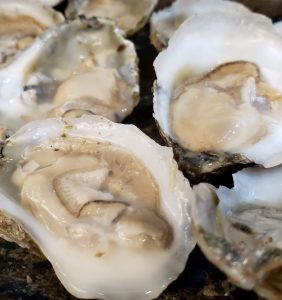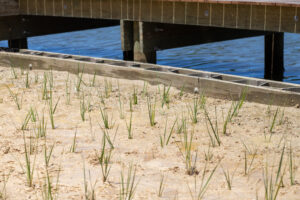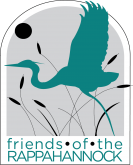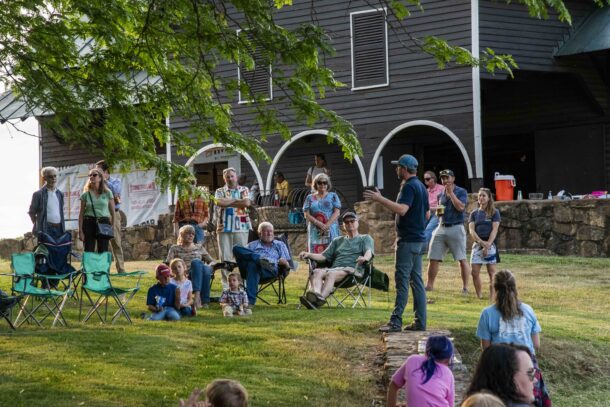 Many of us like to eat oysters, but how many of us know about their value beyond how delicious they are and how our shorelines can be the key to their success?
Many of us like to eat oysters, but how many of us know about their value beyond how delicious they are and how our shorelines can be the key to their success?
Oysters are an essential part of keeping our Rappahannock River healthy. A single adult oyster filters on average 30-50 gallons of water per day, their reefs provide habitat for other organisms, and they’re able to help prevent coastal flooding from storm surges. That’s why Friends of the Rappahannock has made oyster restoration a key pillar of our work in the Tidal Rappahannock region.
A key way to help increase the oyster population is by increasing water quality. This means decreasing bacteria, excess nutrients, and free floating sediment in the water and increasing oxygen levels. While that sounds like a tall order, this is where healthy shorelines come into play.
When a shoreline is healthy, it provides a vast array of ecosystem services that can provide significant benefits to humans. Our shorelines act as buffers against wave energy, prevent erosion along our banks and create resiliency against storms. They filter runoff as it comes from the land. They provide nurseries for juvenile organisms, such as fish, blue crabs, and other commercially and environmentally important species.
Eroding and unhealthy shorelines pose a threat to water quality. We are actively working with landowners to stabilize these shorelines by creating living shorelines. Living shorelines are protected, stabilized coastal edges made of natural materials such as plants, sand, and rocks. The goal of living shorelines is to return the eroded or unhealthy shoreline to its natural state.
 To install living shorelines, Friends of the Rappahannock relies on partnerships with landowners. Once a landowner realizes that their shoreline may be eroding, they can reach out to FOR for an inspection to determine the extent of the issue. FOR will then work with engineers and contractors to create a design, apply for permits, and install the shoreline. Each shoreline is unique and requires its own specific process. Some shorelines only need plants such as marsh grasses to stabilize the bank while some require a sill with additional sand to create a gentler grade for plants to thrive.
To install living shorelines, Friends of the Rappahannock relies on partnerships with landowners. Once a landowner realizes that their shoreline may be eroding, they can reach out to FOR for an inspection to determine the extent of the issue. FOR will then work with engineers and contractors to create a design, apply for permits, and install the shoreline. Each shoreline is unique and requires its own specific process. Some shorelines only need plants such as marsh grasses to stabilize the bank while some require a sill with additional sand to create a gentler grade for plants to thrive.
Restoring your shoreline allows you to directly improve water quality and therefore the oyster population, creating lasting impact on the Rappahannock River.
If you have concerns about your shoreline or would like to learn more about how you can be a steward of our oyster population, please reach out to Anne Self, Lower River Steward.

